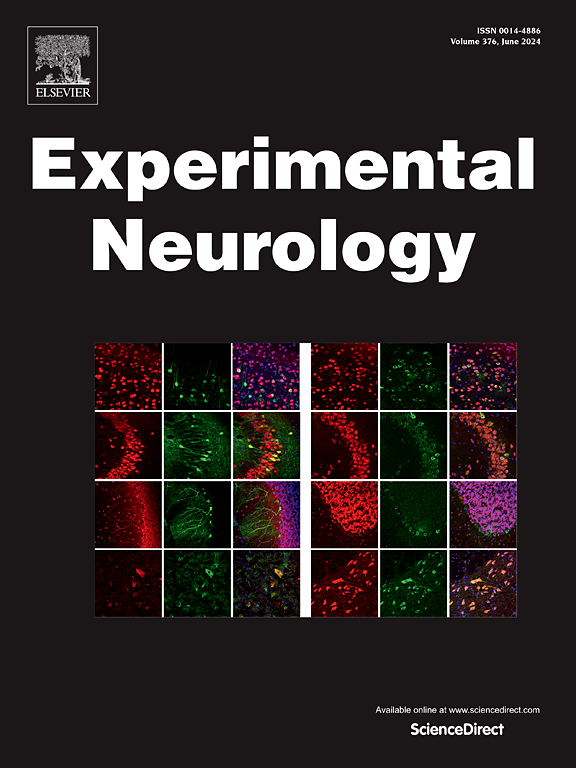MAPK signaling pathway in spinal cord injury: Mechanisms and therapeutic potential
IF 4.6
2区 医学
Q1 NEUROSCIENCES
引用次数: 0
Abstract
Spinal cord injury (SCI) is a severe disabling injury of the central nervous system that can lead to motor, sensory, and autonomic dysfunction below the level of the injury. According to its pathophysiological process, SCI can be divided into primary injury and secondary injury. Currently, multiple therapeutic strategies have been proposed to alleviate secondary injury and overcome the occurrence of neurodegenerative events. Although current treatment modalities have achieved varying degrees of success, they cannot effectively intervene or treat its pathological processes, which may be due to the complex treatment and protection mechanisms involved. Research has confirmed that signaling pathways play a crucial role in the pathological processes of SCI and the mechanisms of neuronal recovery. Mitogen-activated protein kinase (MAPK) signaling pathway plays a crucial role in neuronal differentiation, growth, survival and axon regeneration after central nervous system injury. Meanwhile, the MAPK signaling pathway is an important pathway closely related to the pathological processes of SCI. The MAPK signaling pathway is abnormally activated after SCI, and inhibiting the activity of MAPK pathway can effectively inhibit inflammation, oxidative stress, pain and apoptosis to promote the recovery of nerve function after SCI. Based on the role of the MAPK pathway in SCI, it may be a potential therapeutic target. This article summarizes the role and mechanism of MAPK pathway in SCI, and discusses the shortcomings and shortcomings of MAPK pathway in SCI field, as well as the potential challenges of targeting MAPK pathway in SCI treatment strategies. This article aims to elucidate the mechanism of the MAPK pathway in SCI to emphasize the role of targeting the MAPK pathway in the treatment of SCI, providing a theoretical basis for the MAPK pathway as a potential therapeutic target for SCI treatment.
脊髓损伤中的 MAPK 信号通路:机制和治疗潜力。
脊髓损伤(SCI)是中枢神经系统的一种严重致残性损伤,可导致损伤部位以下的运动、感觉和自主神经功能障碍。根据其病理生理过程,SCI 可分为原发性损伤和继发性损伤。目前,已有多种治疗策略被提出,以减轻继发性损伤和克服神经退行性病变的发生。虽然目前的治疗模式取得了不同程度的成功,但无法有效干预或治疗其病理过程,这可能是由于其中涉及复杂的治疗和保护机制。研究证实,信号通路在 SCI 的病理过程和神经元恢复机制中起着至关重要的作用。丝裂原活化蛋白激酶(MAPK)信号通路在中枢神经系统损伤后的神经元分化、生长、存活和轴突再生中发挥着至关重要的作用。同时,MAPK 信号通路也是与 SCI 病理过程密切相关的重要通路。SCI 后,MAPK 信号通路异常激活,抑制 MAPK 通路的活性可有效抑制炎症、氧化应激、疼痛和细胞凋亡,促进 SCI 后神经功能的恢复。基于MAPK通路在SCI中的作用,它可能是一个潜在的治疗靶点。本文总结了MAPK通路在SCI中的作用和机制,探讨了MAPK通路在SCI领域的不足和缺陷,以及靶向MAPK通路在SCI治疗策略中可能面临的挑战。本文旨在阐明MAPK通路在SCI中的作用机制,强调靶向MAPK通路在SCI治疗中的作用,为MAPK通路作为SCI治疗的潜在治疗靶点提供理论依据。
本文章由计算机程序翻译,如有差异,请以英文原文为准。
求助全文
约1分钟内获得全文
求助全文
来源期刊

Experimental Neurology
医学-神经科学
CiteScore
10.10
自引率
3.80%
发文量
258
审稿时长
42 days
期刊介绍:
Experimental Neurology, a Journal of Neuroscience Research, publishes original research in neuroscience with a particular emphasis on novel findings in neural development, regeneration, plasticity and transplantation. The journal has focused on research concerning basic mechanisms underlying neurological disorders.
 求助内容:
求助内容: 应助结果提醒方式:
应助结果提醒方式:


